The Art of Tom Anholt
By Shira Wolfe
What happens when two painters, who make their living from illustrating children’s books and have a family history as rich and colourful as the beautifully detailed Persian miniature paintings, have a child? In the case of Tom Anholt, it creates a painter who combines natural talent, stellar technique and magical intuition. Creativity was part of the everyday canvas for Anholt, and since the early age of 14, he started spending every day in the studio to paint. After graduating from the Chelsea College of Art and Design in London, this young artist moved to Berlin, where he still lives today.
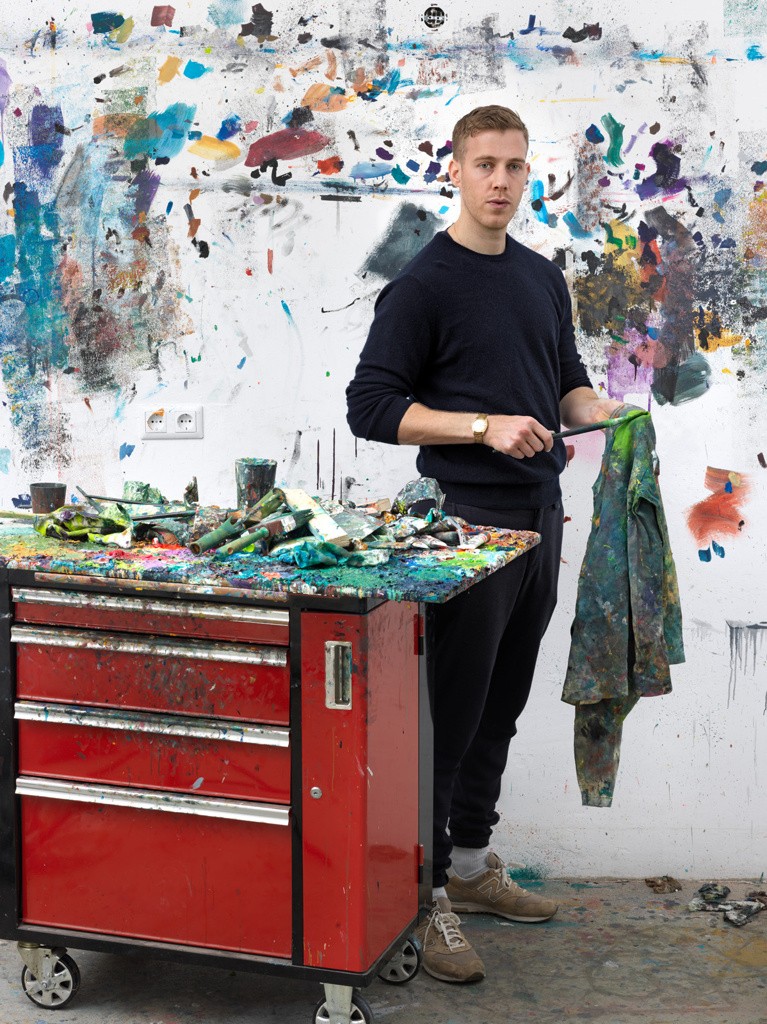
Seeing Anholt’s art is like reading a Borges story – it is filled with intricate (art historical) references from all over the world, weaving webs of real and imagined stories that fold in and out of each other in a colourful dance. Simultaneously, there is something of a kaleidoscopic collage in his works, and at times he reminds you of Matisse, Cézanne and Picasso (he also did a take on Les Demoiselles d’Avignon), then suddenly sparking an association with Chagall, all floating figures and cubist abstractions.
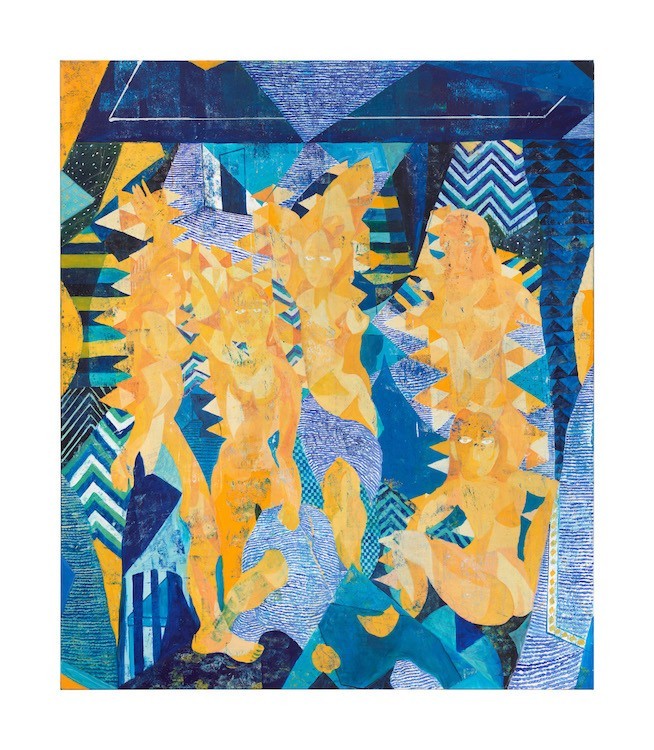
Speaking to Exberliner about his 2015 exhibition History Boys, which was a reflection on art history, personal daily history, and family history (Anholt became fascinated by his roots, learning about his Irish mother’s side of the family and his Persian Jewish father’s side of the family), he says:
‘There are many flawed, almost deliberately naïve references to Christian and Islamic art historical traditions here. When I started working on these paintings, my first thought was, “Isn’t this problematic?” And then I just sort of went with it anyway. I think as an artist you’re allowed to explore. Nothing should be thought of as off limits.’
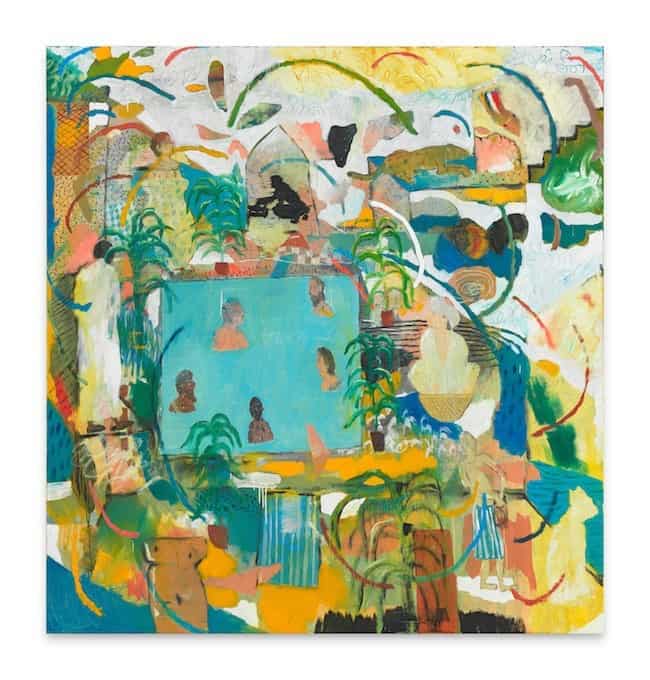
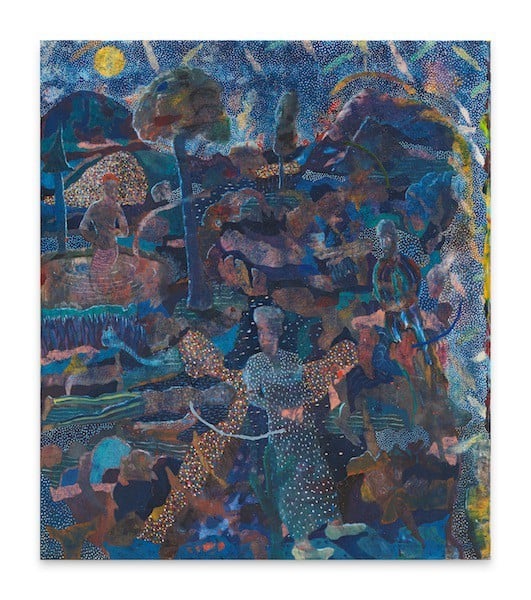
While working on the paintings for this show, he discovered the world of Persian miniatures, and describes this as finding a missing puzzle piece. You can see the influence of these miniatures in his series – the canvases are almost like fairy tales containing the possible histories of his family in colourful scenes.
In a Hunted Project interview, Anholt describes the process of painting as chasing a ball. ‘This ball is made up of all my desires, my fears, my influences, what’s happening in the world and so on. As I move through the world things are added and taken away and the ball keeps rolling. You never quite reach it.’
Anholt’s 2018 exhibition Time Machine was his interpretation of the gallery space as a time machine that can transport you through cultures and times in history, into the past and future. Anholt spun a complex web with his 8 paintings, in which he worked with interesting self-imposed constraints such as the featuring of two animals, two pots and one figure in each of the paintings. He also likes to think of this exhibition as a novel or a music album, where each painting has to work as an individual piece, but must also contribute to the whole.
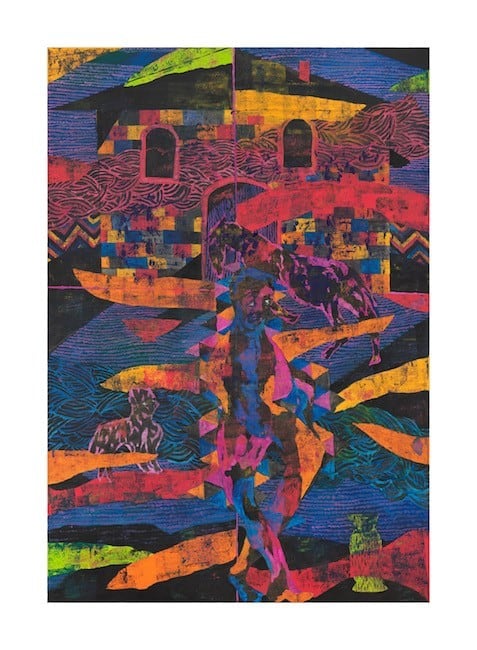
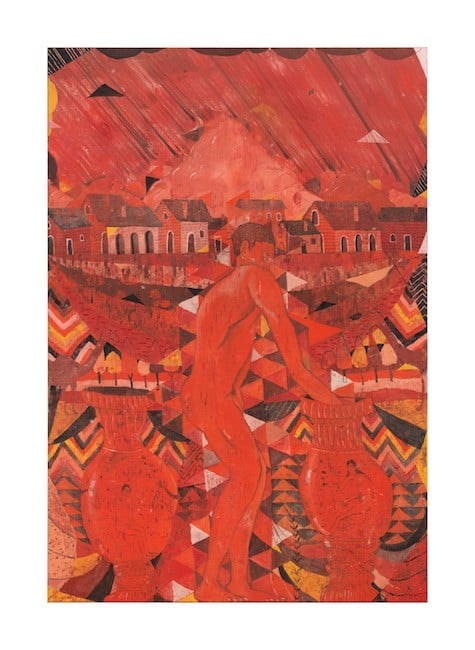
Anholt’s influences are as versatile and magical as his paintings: Bruegel the Elder, Persian miniature painting, the Book of Kells, the Hunt of the Unicorn Tapestries, Goya etchings… This son of children’s book illustrators is a born storyteller, weaving stories of many real and imagined spaces into his paintings. To return to Borges, looking at Anholt’s paintings is almost like looking at an Aleph, ‘one of the points in space that contains all other points.’ (Borges, The Aleph, p.6)
The works of Anholt are currently on view as part of the Known, Unknowns group show at Saatchi Gallery in London (which runs till August 12 2018).
Check out Tom Anholt’s website here.